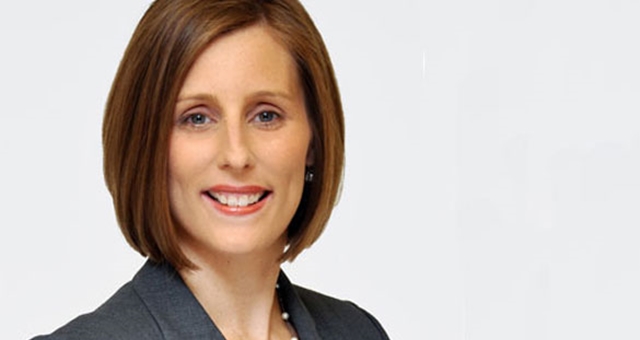
Performance indicators for the U.S. hotel industry remain strong, and there are no signs of a pending downturn even with the current climate of political and economic uncertainty, according to panellists at the sold-out 2017 Hotel Data Conference.
Hosted by STR at the Omni Nashville Hotel last week (Aug 10-11), the Hotel Data Conference sold out for the fourth consecutive year with a record 626 attendees.
“The industry continues to expand, albeit slowly,” said Elizabeth Winkle, STR’s chief strategy officer. “We must remember that the smallest rate of growth is still growth.”
Winkle noted that 2017 was expected to be the year of supply growth and cited several key data points on the current state of the industry:
•As of June, all industry key performance indicators were at record highs, including occupancy at 65.1% and average daily rate at US$125.50;
•2016 inflation-adjusted revenues surpassed the previous high set in 2000;
•New supply in the Top 25 Markets has grown 2.5% in aggregate;
•16 of the Top 25 Markets recorded supply growth larger than the long-term U.S. average (+2.0%). Historically when supply growth reaches 1.8% in a market, occupancy begins to decline; and
•Seven markets have seen supply growth above 3.5%: Denver, Nashville, New York City, Miami/Hialeah, Minneapolis/St. Paul, Oahu Island and Houston. Each of those markets, excluding Nashville and Houston, have grown demand faster, mitigating performance declines.
Adam Sacks, president of Tourism Economics, indicated that the U.S. economy is on relatively good footing and the greatest uncertainty is on the policy front.
“We’re seeing the global economy pick up steam. Emerging markets are absolutely leading the way,” Sacks said. “2017 is where we’re beginning to see that lift. We’re not into robust growth categories, but we’re seeing developing economies.”
In addition, Sacks highlighted three reasons the growth expectations of the hotel industry are still so muted:
•Very weak income growth, while at the same time, consumer spending has been outpacing income growth, pushing the savings rate down;
•A reluctance to raise interest rates; and
•Strength of the dollar.
“U.S. consumer markets and corporate markets are both on pretty solid footing,” Sacks said. “We don’t see anything in leading indicators or fundamental issues with the U.S. economy or interest rates that would cause us to be concerned about a recession in the near-term horizon.”
Amanda Hite, STR’s president and CEO, revealed the company’s revised U.S. forecast for 2017 and 2018 during a panel with Mark Woodworth (senior managing director for CBRE Hotels’ Americas Research) and Gerry Chase (president and COO of New Castle Hotels & Resorts).
During the morning general session on day two, Elizabeth Winkle, STR’s chief strategy officer, and Adam Sacks, president of Tourism Economics, discussed the demographics surrounding the travel industry.
Sacks noted that there are two separate trajectories of travel propensity: business and leisure. Business trips per employee have been declining, while leisure trips per employee have been increasing.
Several key data points about the travel industry were cited:
•Within household age groups, there has been a remarkable shift in spending on lodging: ages 25 to 34 (+20%), ages 65 to 74 (+23%) and ages 75+ (+24%);
•Seniors represented a greater share of households (42%) and lodging spending (45%) in 2015;
•Travel continues to take a larger share in consumer spending. Growth from 2011 to January 2017: lodging (+41.8%), F&B (+31.2%) and air (+21.5%);
•International tourist arrivals to the U.S. are growing between 3% and 4% year over year with 1.24 billion global tourist arrivals in 2016; and
•International exposure ranks differently across top U.S. markets: Miami (46%), San Francisco (45%), New York (44%) and Los Angeles (39%).
This year’s keynote speaker, former Starwood CEO Frits van Paasschen, focused his talk on themes of disruption and innovation.
“Disruption is when you wake up and you realize you’re in trouble and you either didn’t see the change coming or you saw the change coming and didn’t do enough about it,” van Paasschen said.
Panelists from different areas of expertise closed out the conference with data surrounding the industry. Speakers included Lucas Cobb, vice president, integrated planning of MMGY Global; Peter Coles, head economist of Airbnb; and Susan Spinney Corlett, senior director, market management of Expedia, Inc.
Data points cited included:
•During the next 12 months, 13.9 million more vacations will be taken domestically, where 32% of people plan to take more business trips and 12% of people plan to take fewer in the next 12 months –Lucas Cobb;
•In 2017, 8% of all US trips were taken by families, and families represented 14% of all Airbnb guests (Airbnb uses the term “guest arrivals.”) Places most visited by families included Kissimmee, Florida; Los Angeles, California; and San Diego, California – Peter Coles; and
•Roughly 50% of travellers used an OTA for planning their last trip. 45% of Expedia’s traffic came via mobile –Susan Spinney Corlett.
Overall, the 2017 Hotel Data Conference comprised more than 100 speakers in four general sessions, 16 breakout sessions, 18 breakout “data dash” sessions and ten advanced-level “data dive” discussions. All told, the conference featured approximately 970 minutes of hotel industry data.

